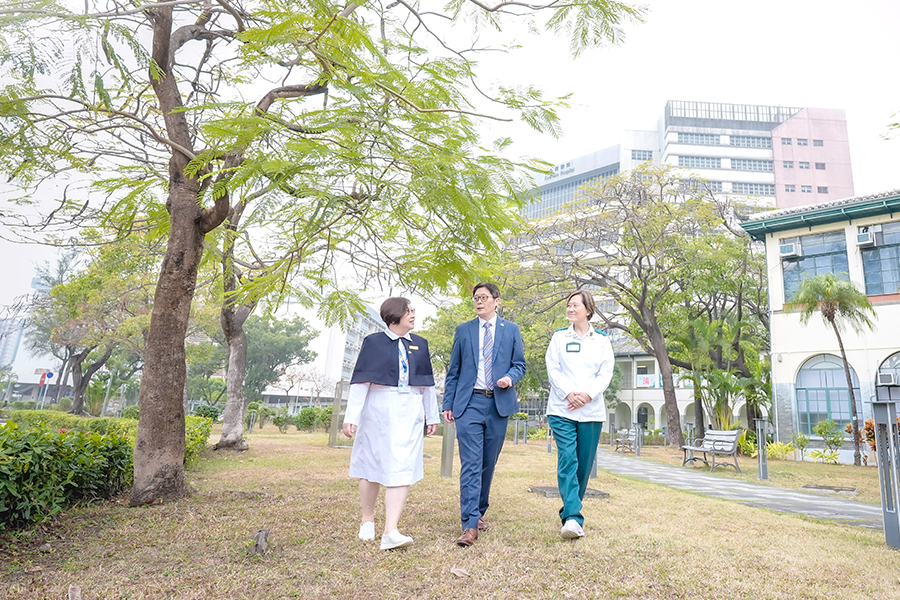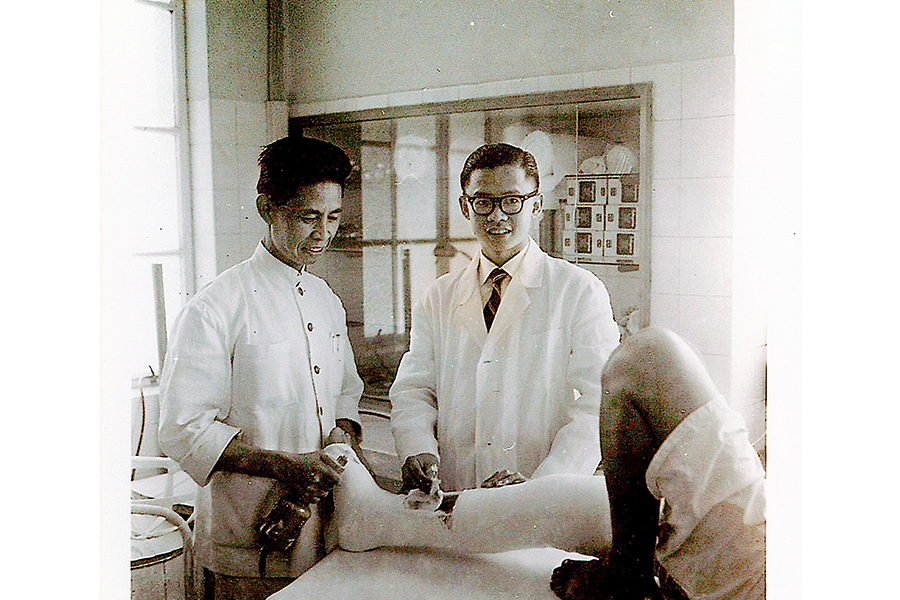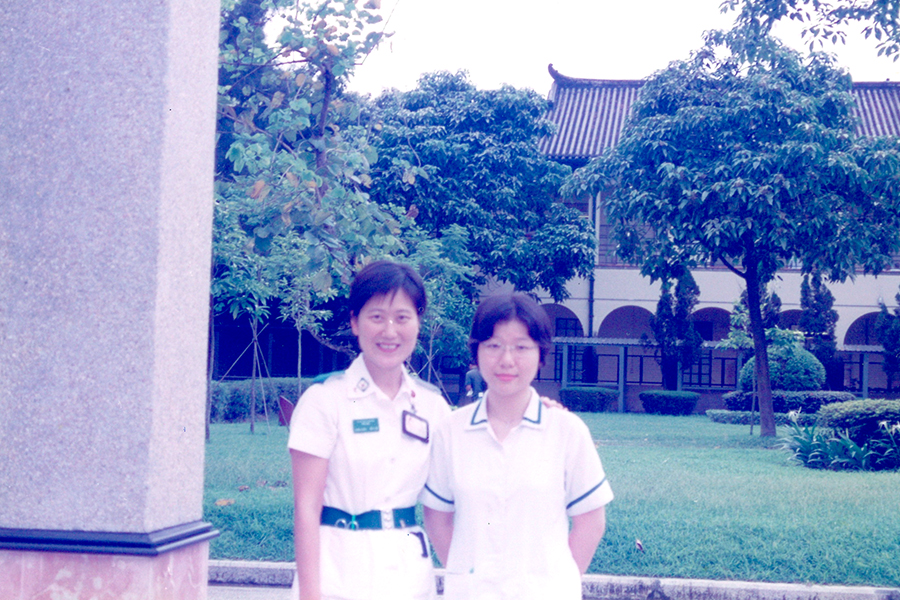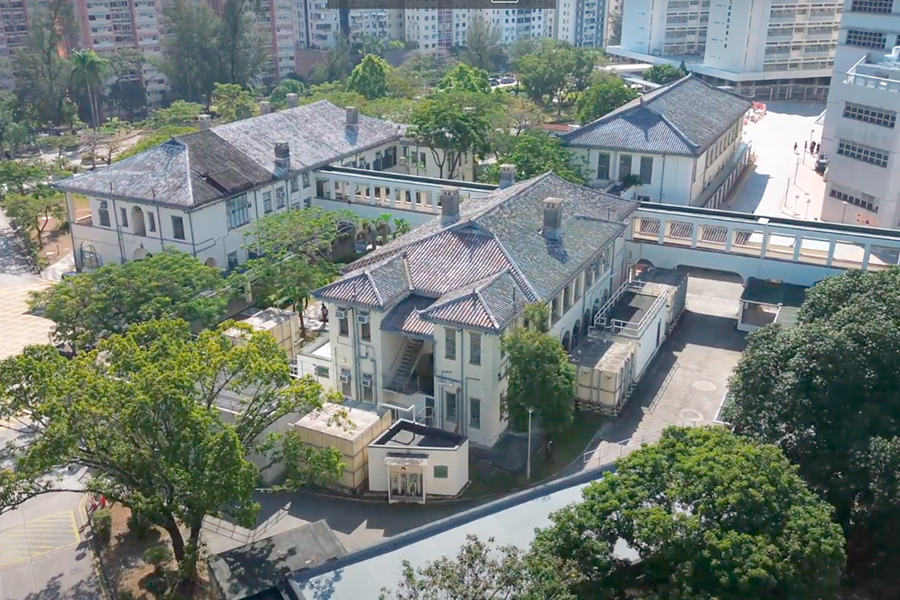
Kowloon Hospital: A century-old oasis of calm helps patients on long road to recovery
 Kowloon Hospital (KH) enjoys a comfortingly serene setting, surrounded by lush greenery on a small hill on Argyle Street. The shadows of the swaying trees sweep soothingly across the historic buildings. The tree rings have silently borne witness to a century of human drama and medical advances. Department Operations Manager (Psychiatry) Chan Fung-man points out, “visitors can look out over a panorama of development spanning the decades from the conference room in the Main Block. On the right is the West Wing built in the 1970s, while on the left is the century-old original hospital with traditional Chinese roof tiles. The Main Building is a modern complex officially opened in 2004.” Chan Fung-man says these three architectural eras sit side by side in harmony, representing the hospital’s unchanging mission to care for patients’ physical and mental wellbeing and bring them comfort on their journey to recovery.
Kowloon Hospital (KH) enjoys a comfortingly serene setting, surrounded by lush greenery on a small hill on Argyle Street. The shadows of the swaying trees sweep soothingly across the historic buildings. The tree rings have silently borne witness to a century of human drama and medical advances. Department Operations Manager (Psychiatry) Chan Fung-man points out, “visitors can look out over a panorama of development spanning the decades from the conference room in the Main Block. On the right is the West Wing built in the 1970s, while on the left is the century-old original hospital with traditional Chinese roof tiles. The Main Building is a modern complex officially opened in 2004.” Chan Fung-man says these three architectural eras sit side by side in harmony, representing the hospital’s unchanging mission to care for patients’ physical and mental wellbeing and bring them comfort on their journey to recovery.
KH was established in 1925 and was the only government hospital in the district at the time. Initially, it operated as an acute hospital before becoming a convalescent hospital in the 1960s. The Jockey Club Kowloon Rehabilitation Centre was founded at the hospital in 1963, and occupational therapy services were introduced in the same year. KH provides specialised rehabilitation service to those patients who are transferred from three acute hospitals with complex condition.
 Department Manager (Occupational Therapy) Dora Chan recalls a young patient was paralysed in a car accident. At the lowest point in her life, her boyfriend and family left her. She was physically and mentally traumatised by what had happened. She longed for the day when she could be self-independent. The team then designed a rehabilitation programme for her, guiding her step by step to turn over in bed, sit up, and use a wheelchair. Within four months, she was discharged and able to live independently. Two years later, she returned to the hospital with her husband to express her gratitude—this time, as an expectant mother. “Every patient has a unique story,” says Dora. “Some endure hardships, while others are fortunate to have the unwavering support of their families. No matter what patients’ circumstances are, our team is always there to accompany them on their road to recovery.”
Department Manager (Occupational Therapy) Dora Chan recalls a young patient was paralysed in a car accident. At the lowest point in her life, her boyfriend and family left her. She was physically and mentally traumatised by what had happened. She longed for the day when she could be self-independent. The team then designed a rehabilitation programme for her, guiding her step by step to turn over in bed, sit up, and use a wheelchair. Within four months, she was discharged and able to live independently. Two years later, she returned to the hospital with her husband to express her gratitude—this time, as an expectant mother. “Every patient has a unique story,” says Dora. “Some endure hardships, while others are fortunate to have the unwavering support of their families. No matter what patients’ circumstances are, our team is always there to accompany them on their road to recovery.”
Psychiatric services were established at KH in 1971, Chan Fung-man says psychiatric services are expanded to keep pace with societal needs, including the introduction of community psychiatric services for patients living in the community, and the establishment of Hong Kong’s first Substance Abuse Clinic to treat patients with substance-induced psychiatric disorders. In recent years, the hospital has developed child and adolescent mental health services in phases.
 The hospital is blessed with a serene, garden-like environment that provides a natural therapeutic space for patients. “The environment and people interact with each other. The presence of nature and a tranquil atmosphere helps psychiatric patients feel more at ease,” Chan Fung-man reflects. An arched grey-brick corridor leads to the SHINE Recovery Centre on the Ground Floor of Block C. The centre allows persons-in-recovery to return as volunteers and support current patients, giving them the opportunity to find fulfilment by helping others. “They are always happy and willing to come back because this place feels like home and brings hope to patients,” says Chan.
The hospital is blessed with a serene, garden-like environment that provides a natural therapeutic space for patients. “The environment and people interact with each other. The presence of nature and a tranquil atmosphere helps psychiatric patients feel more at ease,” Chan Fung-man reflects. An arched grey-brick corridor leads to the SHINE Recovery Centre on the Ground Floor of Block C. The centre allows persons-in-recovery to return as volunteers and support current patients, giving them the opportunity to find fulfilment by helping others. “They are always happy and willing to come back because this place feels like home and brings hope to patients,” says Chan.
Over the past century, KH has grown from a 44-bed hospital to one with approximately 1,300 beds today. Looking ahead, Hospital Chief Executive Dr Chris Tsang says the hospital is not only committed to advancing medical technology and promoting the application of innovative technology, but also to continue to place great importance on patient care. Patients at the hospital generally have longer stays, he points out, so as well as meeting their clinical needs, staff go to great lengths to maintain a patient-centric approach to guide them on their journeys to recovery. Dr Tsang says he hopes his colleagues will uphold the hospital’s commitment to provide high-touch quality care to their patients while continuously raising standards.
